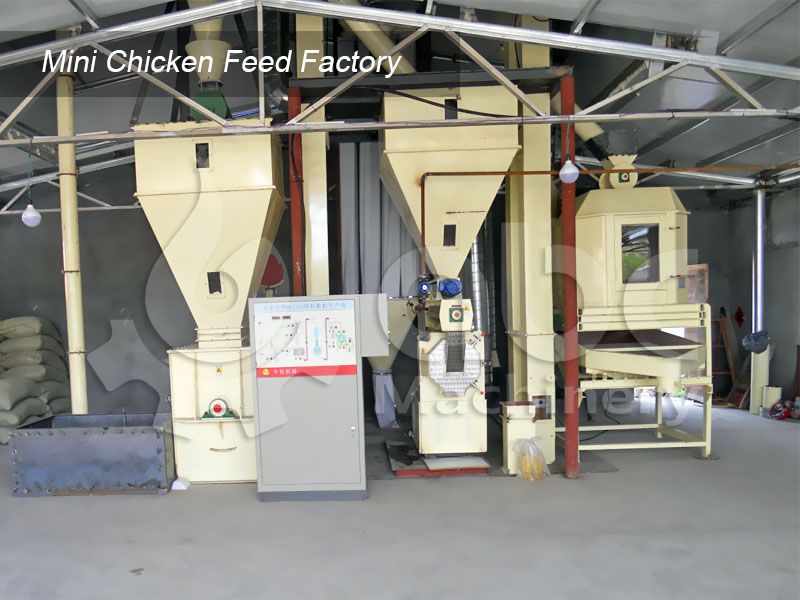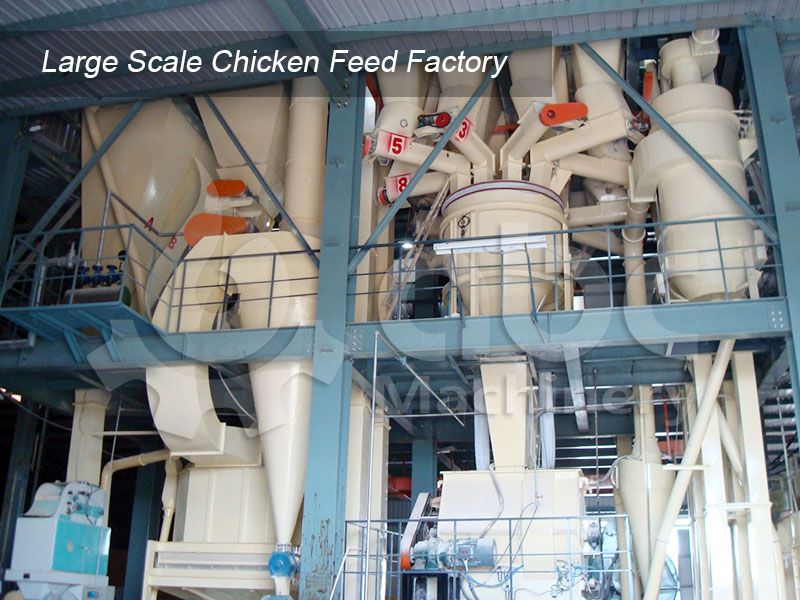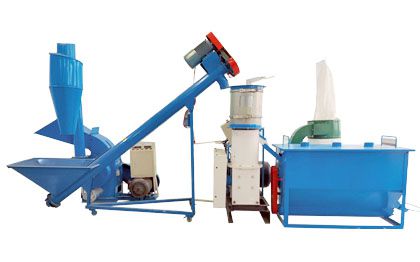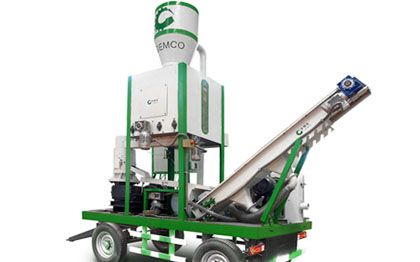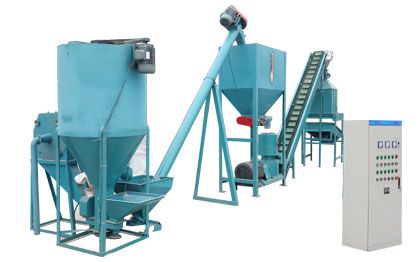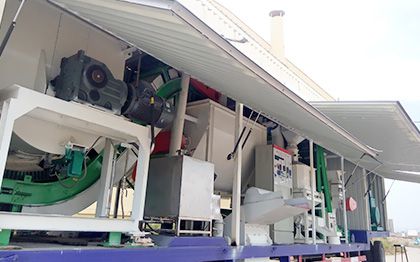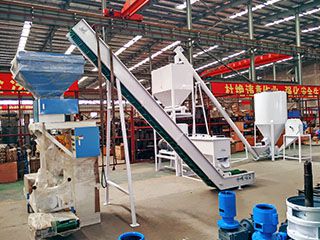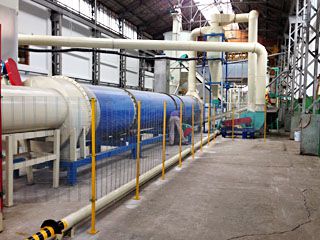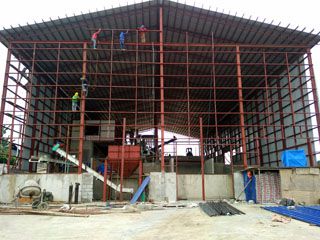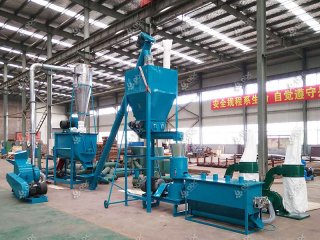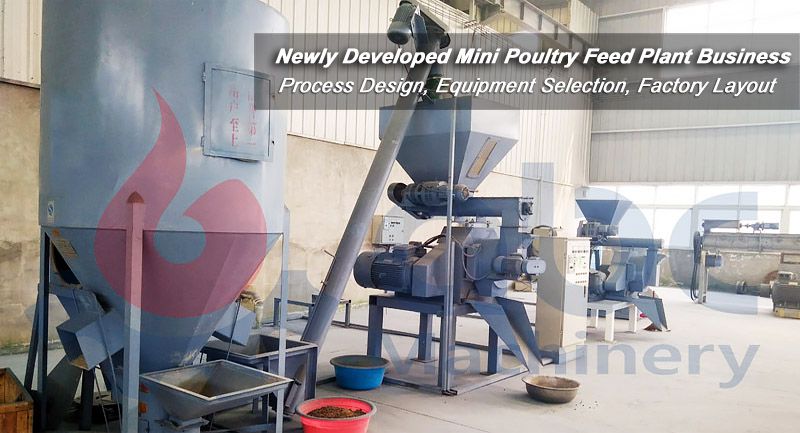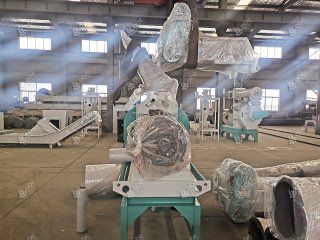Pellet feed is widely used in the sector of animal husbandry for feeding chicken, duck, cattle, sheep, pig and other kinds of animals. Many factors affect the quality of feed produced in chicken feed lines. Such factors include the texture, appearance as well as the water content. However, other technological factors such as pelletizing, modulating as well as cooling also affect the overall pellet feed quality. (Related Product: Equipment for Establishing Mini Poultry Feed Mill)
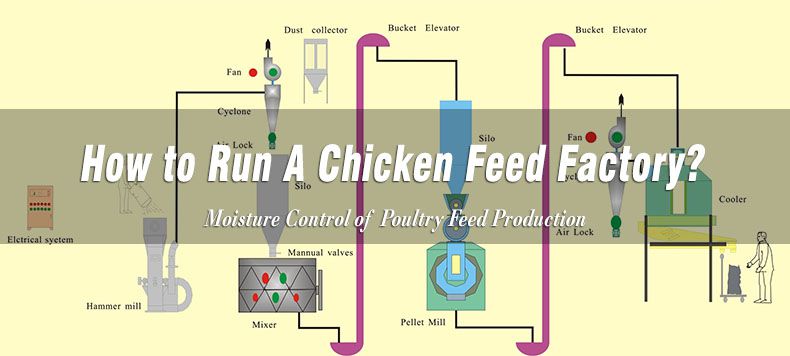
Process Design of Chicken Feed Production Line
Here is an article about how to run a chicken feed line. Let's talk about how to better control your chicken feed line to make high quality pellet feed, especially how to control the moisture content during the pellet feed production.
The measurement of the water content is essential in the various stages of the pellet feed manufacturing process. The moisture content in pellet feed changes continuously during the feed production process and hence is not easy to control when running a chicken feed line. The moisture is affected by various factors including; crushing, conditioning and other liquid additives.
Guidance for Operating Chicken Feed Line
Stages of the chicken feed manufacturing process and how they are affected by the moisture content.
Moisture content is essential in the process of chicken feed line as it is required for intermolecular forces development. The optimal moisture level needed to increase the durability of the chicken feed pellets is between 6% and 12%. The various stages of the pelleting process affected by the water content include: grinding, mixing, conditioning, pellets making and pellets cooling. You maybe also interested in our small unit of animal feed pellet making machine >>
- Chicken Feed Grinding Process
This process is vital for chicken feed production. During this process, the water content decreases. The analysis of the amount of moisture before and after grinding is done by screening the mill with different sieve sizes. The water loss increases with the increase in grain size of the material. The highest moisture loss for various fodder materials is 1%.
- Chicken Feed Mixing Process
If the moisture content of the mixed feed powder is lower than 12.5%, consider adding atomized water when mixing. The amount of this atomized water should not exceed 2%. At this stage of poultry feed production line, the water retention rate is low,and hence of the added 2%, only 40%-50% of it is retained. lt’s recommended to use hot water to prevent the formation of mildew. Add an anti-mildew agent to avoid it. Adjust the nozzle position as well as the nozzle size to ensure uniformity. Adding too much water will increase the risk of mold growth.
- Chicken Feed Conditioning Process
The moisture, temperature as well as time are the factors that control the quality of the conditioning of the feed materials. During steam conditioning, the amount of the mixed water affects the temperature of the conditioning due to the heat energy supplied by the steam. The conditioning can be controlled by adjustment of both the amount of steam as well as the time taken for conditioning which can be done through changing of the filling coefficient of the chicken feed material in the tuner.

Chicken Feed Mill Machine and Spare Parts for Sale
- Feed Pellets Making Process
The pore diameter sizes of the ring dies are different as is the production of pellet feed products (ring die chicken feed pellet machine for sale). When making feed pellets for small chicks, ring die with a smaller pore diameter is used to produce feed pellets of smaller size. For smaller grain sizes the amount of water lost while cooling is higher than in larger grains. Hence larger grains have more moisture content than small ones.
- Pellets cooling process
It is the last process of the chicken feed line. Ensure that the water is below the quality control index. The temperature should be at the proper range where it is not too high. The water content and temperature are related. When the temperature increases (or drops) by 10% the moisture content of the chicken feed pellets increases (or decreases) by 0.6%.
NOTE: The water content dynamics make it hard to measure and control the moisture during chicken feed production. For large scale chicken feed making factories, the most effective way of doing this is by real-time online moisture detection and control as well as the adjustment of the moisture content of the feed product.
Making chicken feed pellet for boilers and hens with chicken feed line projects in The Czech Republic, Guatemala, South Korea, Japan, Thailand, Indonesia, etc., at low cost by chicken feed line manufacturer or supplier at factory price. Contact us now for more information and latest price list of our chicken feed milling machine.
Moisture Control during Chicken Feed Manufacturing Process
For optimal feed quality it is important to control the moisture levels in the feed pellets as per the prescribed limits during the chicken feed production process. If the moisture level in the pellets is very high, the feed pellets are likely to become moldy when they are stored before being sold and used. On the other hand, if the moisture level is lower than the prescribed levels, the feed pellet is likely to disintegrate into powder, which cannot be easily consumed, causing quality complaints and wastage of feed material. Hence chicken feed pellet manufacturers have developed a sophisticated method of controlling the moisture levels in the feed pellets during the feed manufacturing process. (Related Project: 20 ton/h Poultry Feed Mill Plant Layout )
There are two main methods of detecting and controlling moisture levels in the chicken feed making process:
- Feedback: The water levels in the pellets are measured after cooling in the feedback control method.
- Feed-foward Control: The moisture levels in the feed pellets are measured before conditioning in the feed forward method.
The moisture levels measured using these methods are then compared with the recommended value, and the moisture levels in the steam and spray from the chicken feed pellet machine are adjusted accordingly so that the water levels in the feed pellet produced remain at the required levels, stipulated by the quality guidelines. It is observed that better moisture levels are obtained using the feed-forward method of water level control compared to the feedback level.
Other Tips for Making High Quality Chicken Feed Pellets
The addition of water during the manufacturing of the chicken feed pellet is controlled with a PLC based system which includes a programmable flow-meter, water pump, solenoid valve and a stainless steel storage tank. So precise measurement and control of moisture levels is required for production of quality chicken feed pellets. Mixed poultry feed mill project design and complete project report for your reference!
- As a large number of raw materials are used in chicken feed lines, the moisture levels in the pellets vary significantly. After mixing of raw material the water content will vary between 9-14 % and it should be controlled to remain below 13% during the processing. After conditioning, the moisture levels should be regulated at 15 to 16 percent to reduce the powder rate of the chicken feed pellet. Steam and temperature are adjusted during the manufacturing process to regulate the moisture levels in the poultry feed pellet.
- To increase the moisture levels in the feed pellet, the conditioning time can be increased, steam pressure reduced or steam that is not saturated can be used for conditioning. For pellets with higher moisture levels than recommended, supersaturated steam at a high pressure should be used. During the cooling process the water levels in the feed are regulated to meet the required standards. For small pellet feeds, the cooling time is lower, and less air is required. However for larger and wetter pellet feeds, the cooling time is more, and a higher air volume is required.
If you are planning to start your own chicken feed making business, or set up a chicken feed line, here are some additional tips for you to help you better control the poultry feed mill plant. You are also welcome to contact us if you are interested in getting more details of our chicken feed production equipment. We can offer customized poultry feed mill project design and complete project report for your reference!
- Why do you need pellets for feeding broilers?
- According to foreign research reports, broilers only is the growth performance of pellet feed is higher than that of foraging sub-feeding, after pelleting can improve the growth rate of broilers 6.1%-12.23%, feed utilization rate increase is lower than the growth rate, generally in about 5%. Pelletizing improves the growth rate of fellows by 5.4%-17.96%, while the feed utilization rate is almost not improved. The impact of pelleting on chicken growth performance is mainly to improve the palatability of the feed, making the nutrients evenly fed.
- Why add fats and oils to chicken feed?
- Adding 2-5% of fats and oils to stand-alone feeds, especially adding fats and oils rich in unsaturated fatty acids can increase egg weight, and adding linolenic acid can improve egg production performance. Adding fats and oils to broiler feed can improve the apparent digestibility of dry matter and crude protein in broilers.

